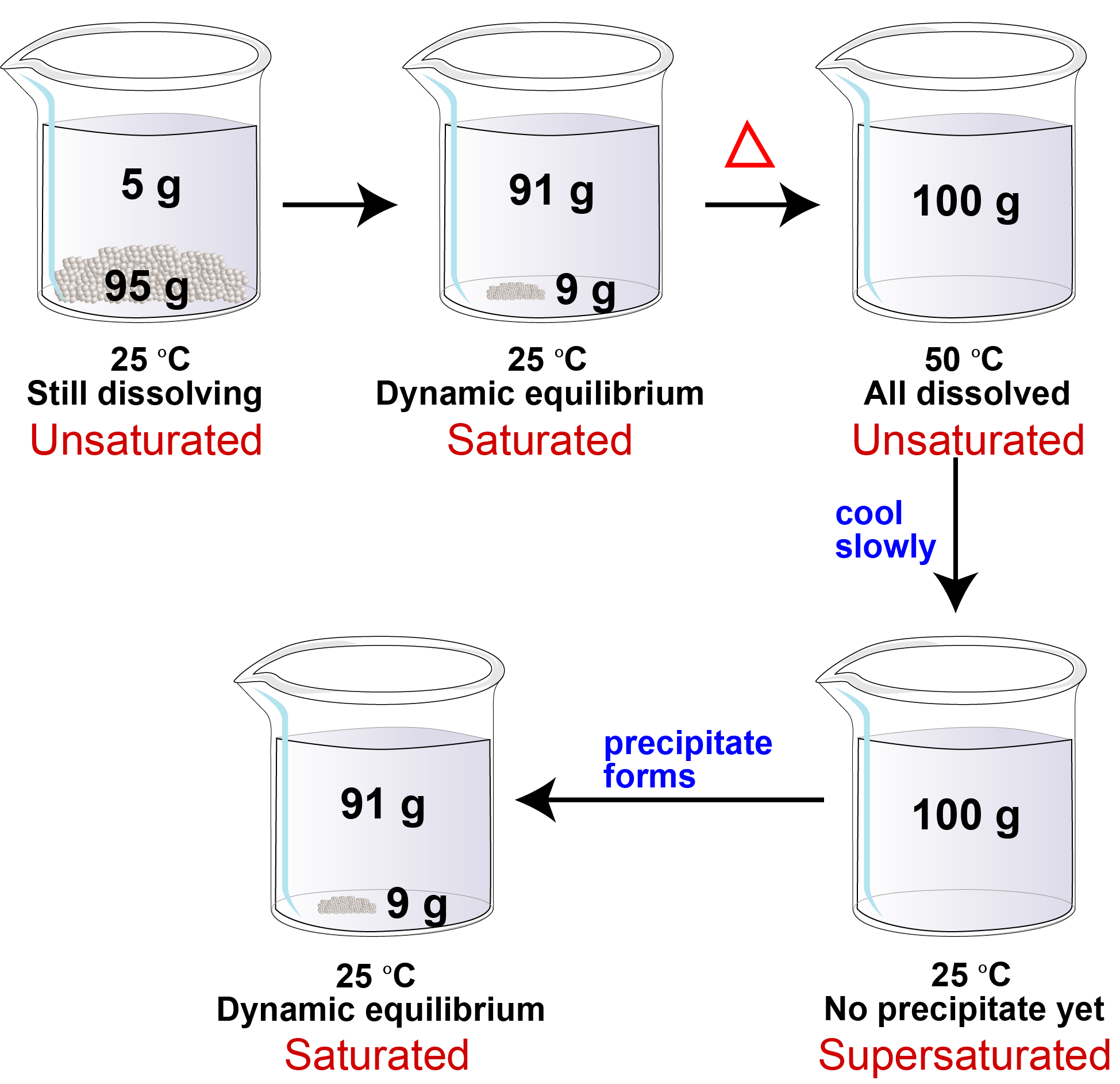Supersaturated Solutions
Increased temperature usually increases the solubility of solids in liquids. To understand why, we need to return to the Second Law of Thermodynamics. Increased temperature means a greater average velocity for the particles. This allows them to move from one position to another more easily. The greater freedom of movement allows the system to change its state more easily, and in keeping with the Second Law, it changes to the most probable state available, that is, the most dispersed state of which it is capable. Solids are condensed systems, so the dissolving of a solid usually leads to increased dispersal of the system. Therefore, although there are exceptions, an increase in temperature generally leads to an increase in a solid’s solubility. The table below shows the change in solubility with changing temperature for glucose in water.
Solubility of Glucose
Temperature
Solubility in grams of glucose per
100 mL of water25 °C
91
30 °C
125
50 °C
244
70 °C
357
90 °C
556
The change in solubility with change in temperature can be used to create solutions with more solute dissolved than is predicted by the solubility of the substance. For example, the solubility of glucose at 25 °C is 91 g glucose per 100 mL of water, and the solubility of glucose at 50 °C is 244 g glucose per 100 mL of water. Therefore, if we add 100 g of glucose to 100 mL water at 25 °C, 91 g dissolve. Nine grams of solid remain on the bottom, and the solution is saturated at this temperature. If we then heat the mixture to 50 °C, the remaining 9 grams of glucose will dissolve. At the new temperature, the solubility limit in 100 mL of water is 244 g glucose. With only 100 g of glucose dissolved, our system is now unsaturated.
If we now slowly cool the mixture back to 25 °C, 9 g of glucose should precipitate from solution. Sometimes this happens immediately, but sometimes it takes a while for the glucose molecules to find their positions in a solid structure. In the time between the cooling of the solution and the formation of glucose crystals, the system has a higher amount of dissolved glucose (100 grams) than is predicted by the solubility limit at 25 °C (91 grams). Because the solution contains more dissolved solute than is predicted by the solubility limit, we say the solution is supersaturated.

Rock candy is produced from a supersaturated solution of sugar. You can make it by adding more sugar to water than will dissolve at room temperature, heating the mixture until the solubility limit has been increased enough to allow all of the sugar to dissolve, suspending a string in the hot solution, and allowing the solution to cool slowly back to room temperature. The solution remains supersaturated for a long while. Sugar molecules, which are relatively large, are slow to find the proper positions for crystal formation. Meanwhile, collisions with water molecules keep knocking them apart. Eventually, however, solid begins to form on the protected, irregular surfaces of the suspended string. Dissolved sugar molecules collide with the solid precipitating onto the string and gradually create the large, well-formed sugar crystals that we call rock candy.
